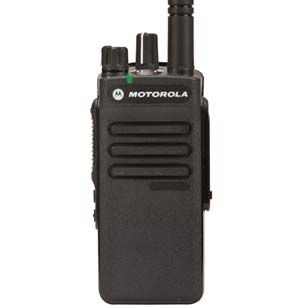Some Common Misperceptions About Two-Way Radios
DP4401e Radio

The first measures are always an overview of the market scenario. A multi-step strategy also includes crucial factors, such as a thorough overview of the specifications of the company, the goals of the solution, and the context in which the radio equipment should get utilised. These choices will prove your investment for the future and provide a noticeable return on investment from the new switch on.
Cloud-based software applications are becoming a key element in decision-making; embracing these software brings unity. Control can get forwarded to your radio system for procedures such as alarm management, job ticketing, security tours and dispatch control, with both on-site, and off-site multi-platform links. Following are a few of the misconceptions about two-way radios-
Mobile/Cell Phones Are Better Than Two-Way Radios.
The appropriate equipment must get suggested for the user environment. There seems to be a misperception that the clarity of a two-way radio broadcast doesn't achieve as well as a mobile phone, that can be a reason for concern in terms of operation.
Modern DMR two-way radios like DP4401e radio, DP1400 radio, and DP4600e digital radio provide immediate transmission of sound by digitally transmitting sound and cancelling background noise, just sending clear audio.
Two-Way Radios Are Expensive.
Costs can often be taken into account when concentrating on migration or the application of extra features. With an approximate life span of 5-7 years, DMR’s two-way radios are far more cost-effective compared to other technologies. The effect is a return on the expenditure, a higher degree of customer service, and this inside the negotiated budget.
Purchasing equipment is also not the only choice. You can consider hiring radio equipment on a provisional or long-term basis at a specified weekly rate; hiring through OPEX budgets could provide a feasible alternative where CAPEX funding is not available. Hiring rates depend on the fixed term; for example, the weekend hire charge may be marginally higher than hiring the very same radios for a more extended period.
Two-Way Radios Do Not Offer Extra Features/Applications.
It is a standard procedure for employees to be using radios through most of their entire working day and then take a glance at several other technologies to aid in various aspects of their job role. Advanced two-way radios like DP4401e radio, DP1400 radio, and DP4600e digital radio have several operational and safety features which can get switched on as standard. New additions to software applications may help to consolidate day-to-day or site management tasks; these can sometimes justify the expense of upgrades to the radio system.
Despite the misunderstandings described above, radio technology remains a leading preference for both the private and public sectors. Opening up more opportunities for your radio system Radiocoms can allow you to keep pace with digital advancements and ideas.
